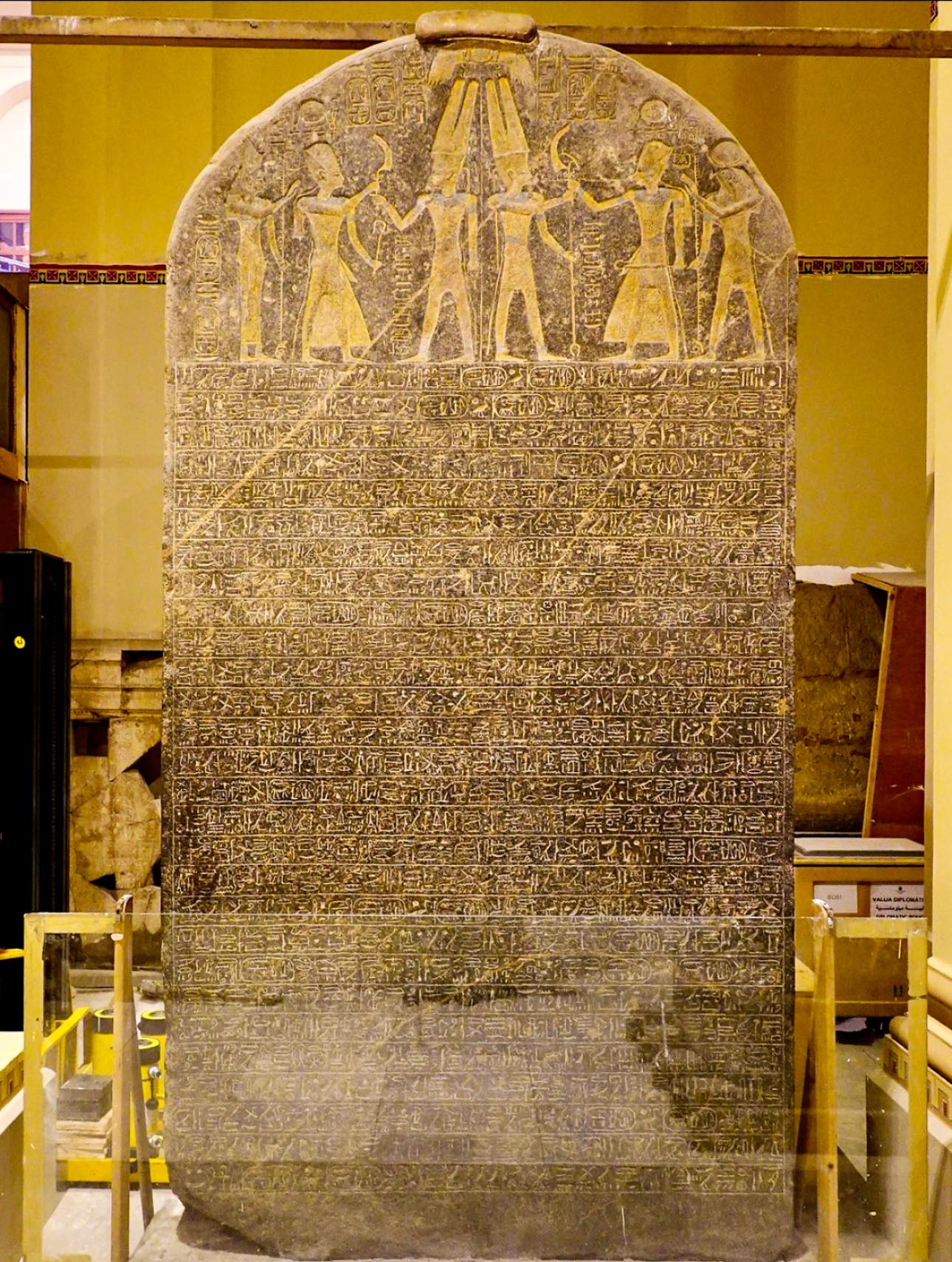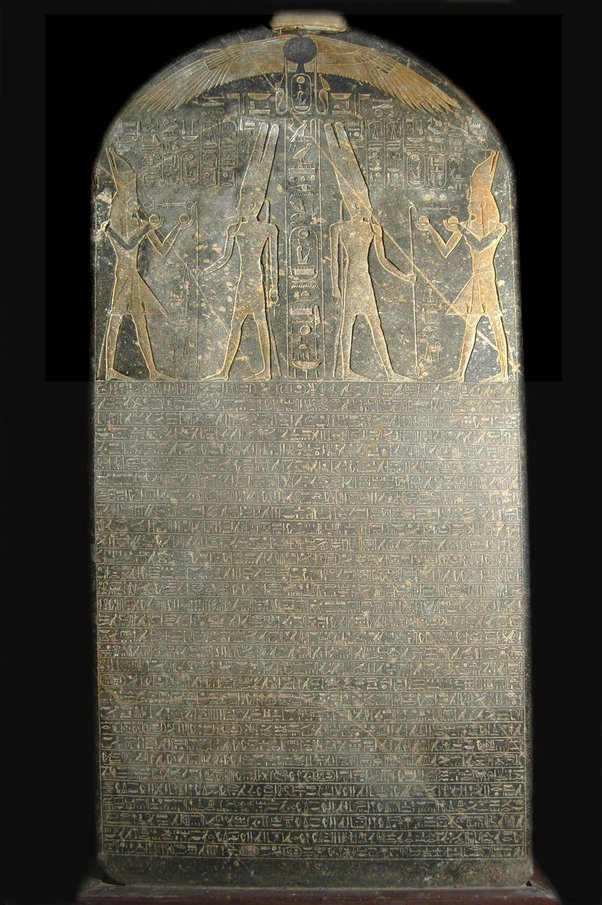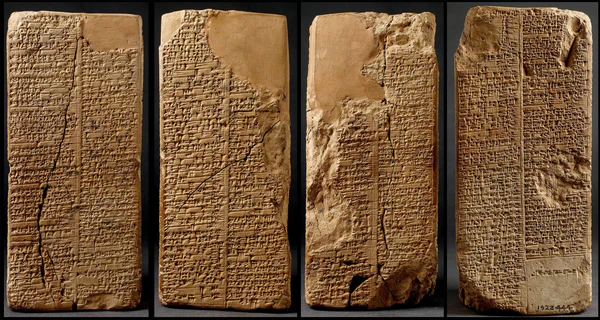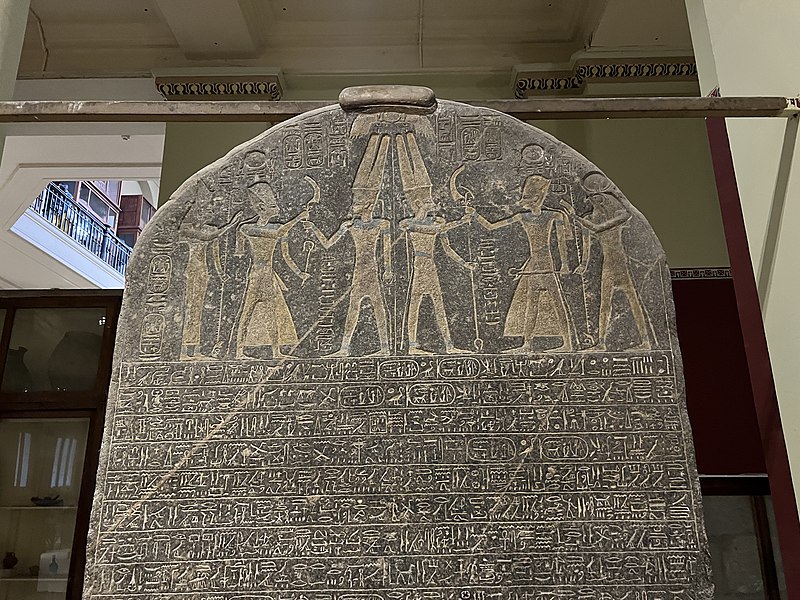The ancient world is full of fascinating historical artifacts that continue to captivate scholars and the general public alike. One such treasure is the Merneptah Stele, an inscription left behind by the Egyptian Pharaoh Merneptah, who ruled from 1213 to 1203 BC. This remarkable stone slab is of immense significance because it contains the earliest known reference to the name “Israel” in any ancient Egyptian text.
As an expert content writer in the field of history and archaeology, I’m excited to delve into the importance of the Merneptah Stele and explore how it sheds light on the early history of ancient Israel. This blog post will provide a comprehensive overview of this crucial historical document, its key details, and the insights it offers into the geopolitical landscape of the ancient Near East during the late Bronze Age.
The Discovery and Significance of the Merneptah Stele

The Merneptah Stele was discovered in 1896 by renowned Egyptologist Flinders Petrie during excavations at the site of ancient Thebes, the capital of Egypt during the New Kingdom period. This large, granite slab was originally erected as a victory monument, commemorating the military campaigns and achievements of Pharaoh Merneptah.
The stele’s significance lies in the fact that it contains the earliest known reference to the term “Israel” outside of the biblical texts. This is a crucial discovery, as it provides an extra-biblical confirmation of the existence of a distinct group or entity known as “Israel” during the late 13th century BC. The mention of Israel alongside other well-established peoples and cities in the region suggests that by this time, Israel had already become a recognizable presence in the ancient Near East.
The Inscription and its Historical Context
The Merneptah Stele is primarily a record of Merneptah’s military victories, detailing his campaigns and the subjugation of various peoples and regions. The relevant section that mentions Israel reads as follows:
“Plundered is the Canaan with every evil, All lands are united and pacified. Those who were in turmoil are subdued by the King of Upper and Lower Egypt… Israel is laid waste and his seed is not;”

This passage provides valuable insights into the geopolitical landscape of the ancient Near East during the late Bronze Age. The reference to Israel being “laid waste” and its “seed not existing” indicates a significant defeat for the people identified as Israel at that time. This suggests that Merneptah’s military campaigns had a substantial impact on the region, including the territory occupied by the Israelites.
It’s important to note that the Merneptah Stele is not the only ancient text that mentions Israel. The Bible, of course, provides a wealth of information about the history of the Israelites, but the Merneptah Stele is one of the few contemporary extra-biblical sources that corroborates the presence of Israel in Canaan during the late 13th century BC.
Interpreting the Merneptah Stele: Insights and Debates
The discovery of the Merneptah Stele has sparked a great deal of scholarly debate and discussion about the early history of ancient Israel. Here are some of the key insights and interpretations that have emerged from the study of this remarkable artifact:
The most significant contribution of the Merneptah Stele is that it confirms the presence of a distinct group or entity known as “Israel” in the region of Canaan during the late 13th century BC. This is an important validation of the biblical accounts, which also mention the Israelites’ presence in Canaan during this time period.

While the stele confirms the existence of Israel, it doesn’t provide detailed information about the nature of their settlement or the extent of their political or social organization. Some scholars argue that the reference to Israel being “laid waste” suggests that they were a nomadic or semi-nomadic group, rather than an established, centralized kingdom. Others interpret the passage as indicating the defeat of a more organized Israelite polity.
The Merneptah Stele offers insights into the relationship between Egypt and the people of Israel during this period. The fact that Israel is mentioned alongside other established peoples and cities in Canaan suggests that they had become a significant enough presence to warrant inclusion in Merneptah’s military campaigns and victory inscriptions. This indicates that the Israelites were likely an active player in the geopolitical landscape of the ancient Near East, with both cooperative and conflictual relationships with their neighbors, including the mighty Egyptian empire.
The Merneptah Stele provides a valuable reference point for establishing the chronology of early Israelite history. By confirming the existence of Israel in Canaan during the late 13th century BC, the stele helps to corroborate the biblical accounts and the traditional chronology of the Israelite settlement in the region.
The Merneptah Stele and the Ongoing Study of Ancient Israel

The Merneptah Stele is a remarkable artifact that continues to captivate scholars and historians interested in the early history of ancient Israel. As one of the few contemporary extra-biblical sources that mention Israel, this inscription offers a unique perspective on the region’s geopolitical landscape and the interactions between different groups and kingdoms.
While the stele doesn’t provide a comprehensive picture of early Israelite history, it does offer valuable insights and a crucial reference point for researchers. By studying this artifact, along with other archaeological and textual evidence, scholars can gain a deeper understanding of the origins, development, and interactions of the ancient Israelite people within the broader context of the ancient Near East.
Conclusion
The Merneptah Stele is a true treasure trove of historical information, shedding light on the early history of ancient Israel. This remarkable inscription not only confirms the existence of Israel as a distinct entity in Canaan during the late 13th century BC but also provides insights into the region’s geopolitical landscape and the interactions between different groups and kingdoms.
As an expert in the field of history and archaeology, I believe the Merneptah Stele is a testament to the ongoing quest to uncover and understand the past. By studying this and other ancient artifacts, we can continue to piece together the complex and fascinating story of the ancient world, including the early history of the Israelite people. This knowledge not only enriches our understanding of the past but also helps us contextualize the present and better appreciate the enduring legacy of these ancient civilizations.
